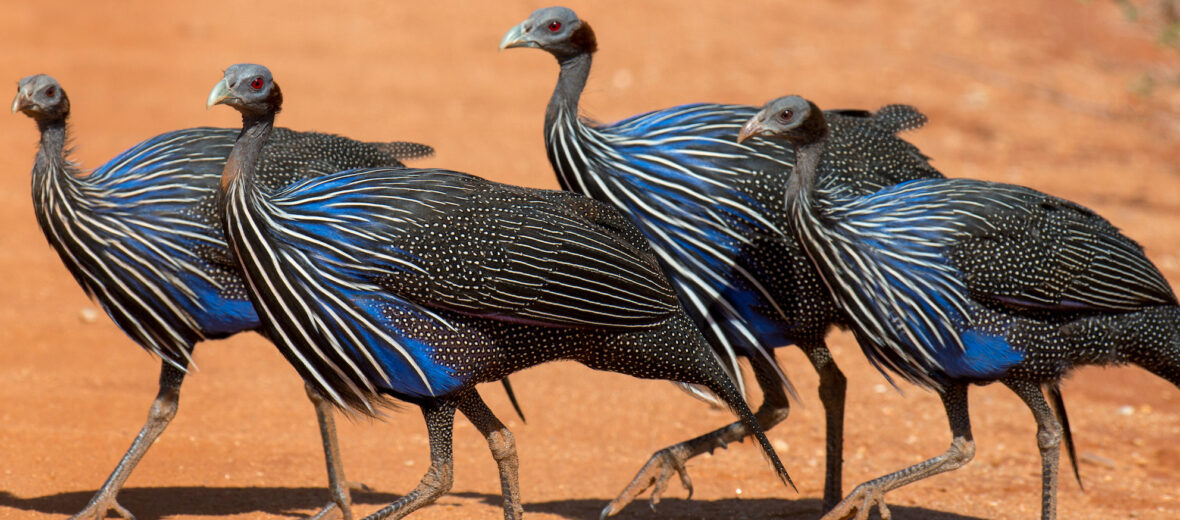
The vulturine guineafowl, aka royal guineafowl, is the largest known species of guineafowl. Their large range includes: Ethiopia, Somalia, Kenya, and Tanzania. They prefer dry desert areas with scrub brush and tall grass; preferably with tall roosting trees. These birds tend to be aggressive towards one another and vicious fights can break out over nesting territories. Plus the males can even be aggressive towards females. Due to their numbers, they are listed as Least Concern by the IUCN.
First the Stats…
Scientific name: Acryllium vulturinum
Weight: Up to 3.5 lbs.
Length: Up to 2.3 feet
Wingspan: Up to 31.5 inches
Lifespan: Up to 15 years
Now on to the Facts!
1.) Vulturine guineafowl eat seeds, roots, tubers, vegetation, fruits, grubs, rodents, small reptiles, and insects. This makes them omnivores (eat plant and animal matter).
2.) They are monochromatic as well as monomorphic; meaning that males and females look very similar and are hard to tell apart.
3.) Vulturines are diurnal (active during the day).
4.) Various raptors prey on these guineafowl. Monkeys also are known to steal their eggs.
5.) These birds live in flocks of 20 – 30 individuals.
But wait, there’s more on the vulturine guineafowl!
6.) They make loud “chink-chink-chink-chink-chink” calls, from their nocturnal (active at night) roosts.
7.) Females lay up to 18 eggs. that hatch in up to 10 weeks.
Did you know…?
Even though they can fly pretty well, these birds prefer to run.
8.) Chicks are born precocial (well developed at birth) and are able to fly in just a few days.
9.) Vulturine guineafowls can go long periods without drinking standing water, as they receive most of their water from the foods they eat.
10.) They are named “vulturines” due to the fact that they lack feathers on their head and neck.
Now a Short Vulturine Guineafowl Video!
Be sure to share & comment below! Also, check out the Critter Science YouTube channel. Videos added frequently!
Want to suggest a critter for me to write about? Let me know here.



